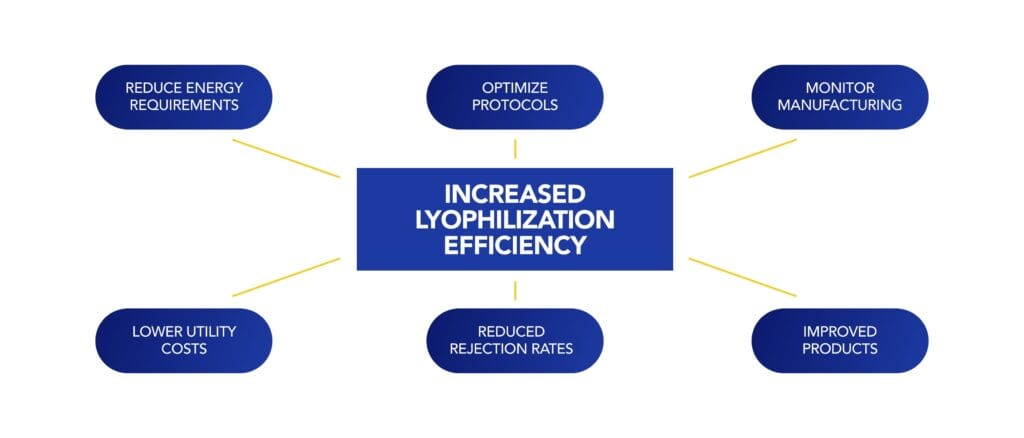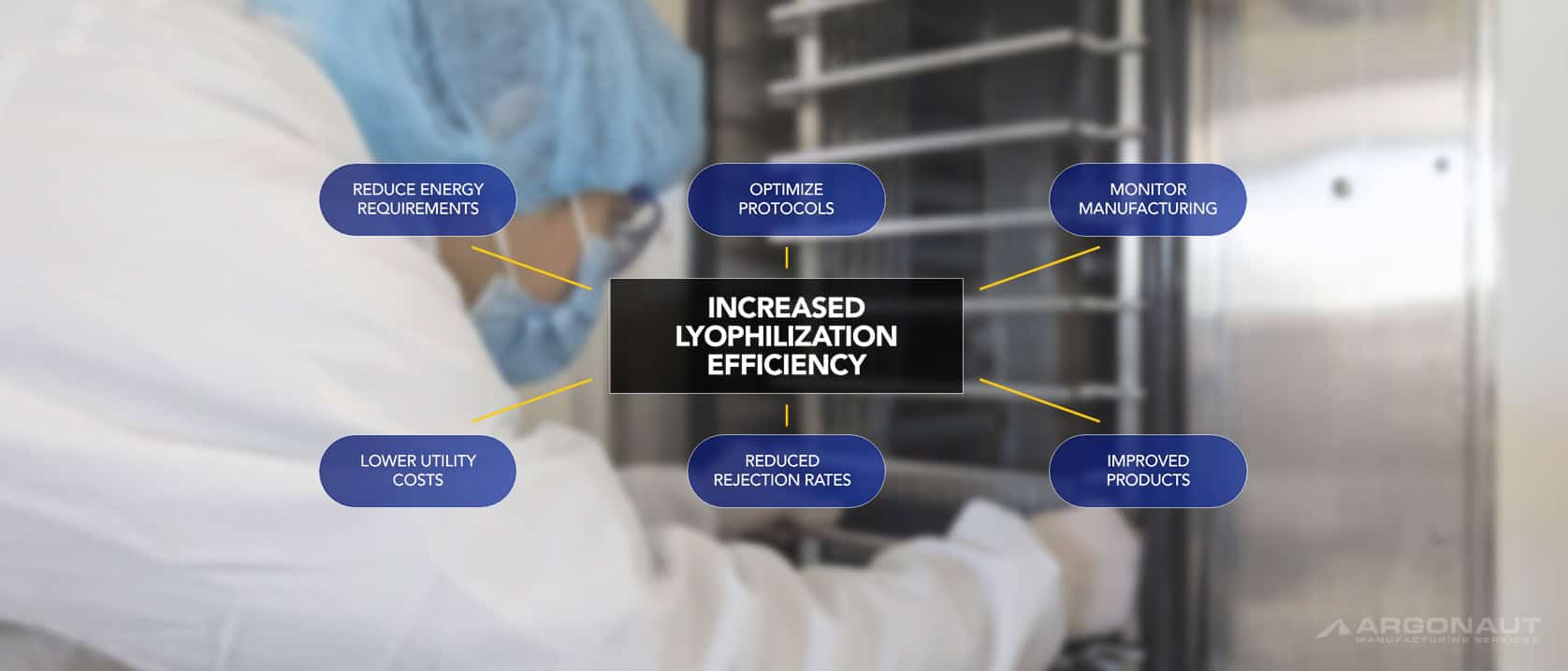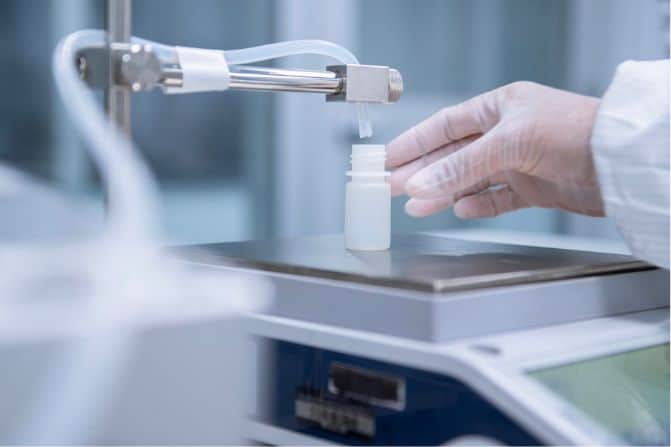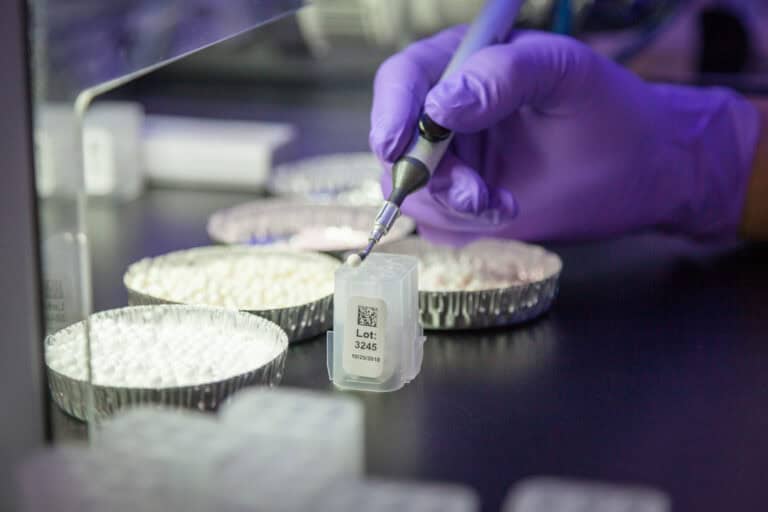Lyophilization Optimization to Improve In Vitro Diagnostic Device Performance, Increasing Lyophilization Process Efficiency
In this second blog post in the series on how lyophilization can enhance diagnostic devices, we consider the key elements of improving lyophilization process efficiencies. Maximizing lyophilization process efficiency can positively impact both the cost and performance of diagnostic devices that incorporate lyophilized reagents.
Lyophilization, otherwise known as freeze drying, remains an essential process in pharmaceuticals and diagnostics as it stabilizes products, extends shelf life and eases storage and transportation (Ref 1). Lyophilized formats for diagnostic assays include: cakes, LyoDose beads, and LyoDots® . In a previous series article, we covered the basics of optimization of the lyophilization process, how it is essential to guarantee reliable, consistent, stable and high-quality lyophilized products (Ref 2).
The trend in point of care diagnostic instrumentation is towards miniaturization (“lab on a chip”) to address a number of issues including self-containment, ease of use, and reducing costs (Ref 3). A main factor in implementing lyophilization in diagnostic devices is based on the lyophilization process efficiency of the product. Poor lyophilization process efficiencies will increase both operations cost and rejection rates, which ultimately results in higher cost of the reagents used in a device. Lower lyophilization efficiency can also result in poor quality performance of the device (which will be covered in the next part of this blog series).
A main factor in implementing lyophilization in diagnostic devices is based on the lyophilization process efficiency of the product.
Improving lyophilization process efficiency can be relatively straightforward through equipment changes and upgrades that improve energy usage:
- The use of energy efficient compressors, condensers, and vacuum pumps will reduce energy consumption during the lyophilization process. Advanced refrigeration systems will also use less energy.
- Efficiency can be increased by using upgraded technology and equipment such as newer freeze dryer/lyophilizer with improved heat transfer capabilities and accurate control systems.
- Newer designs for the shelves and condensers enhance heat transfer in both the sublimation and desorption stages, accelerating the lyophilization process.
- Waste heat produced throughout the process can be re-used by putting in place heat recovery equipment to further reduce overall total energy needs.
Lyophilization process efficiency can also be improved by optimizing protocols:
- The collapse temperature, usually determined by freeze drying microscopy or differential scanning calorimetry, is crucial in lyophilization because it represents the maximum temperature that can be applied during the primary drying step without causing the product’s structure to be impacted, leading to poor product appearance, incomplete drying, and compromised stability upon reconstitution. Lyophilizing near but not exceeding the product collapse temperature will result in an optimum lyophilization cycle, requiring minimum energy and time. However, when the product temperature exceeds its collapse temperature, product quality can be significantly impacted.
- Use techniques like controlled nucleation, which leads to faster and more uniform freezing of ice crystals. This results in shorter cycle times and more consistent drying, thereby reducing overall energy needs.
- Fine tune temperature ramps, hold times, and vacuum pressures.
- The uniformity of drying can be impacted by overcrowding, which can be avoided by maximizing shelf utilization. Adjust the batch sizes to correspond with the freeze dryer capacity to match throughput and reduce downtime in between cycles.
- Optimize raw materials and formulations by selecting lyoprotectants and cryoprotectants that accelerate the lyophilization process, increases stability, and shortens cycle time.
Lyophilization process efficiency can also be maximized by product monitoring:
- Consistent product quality can be ensured through dynamic process parameter optimization made possible by real-time monitoring and control systems (like supervisory control and data acquisition systems, SCADA).
- Implementing process analytical technology (PAT) tools to monitor critical quality attributes and critical process parameters in real-time, enables immediate adjustments to optimize and maximize efficiency.
- AI, machine learning and data analytics can be used to evaluate process data, spot trends, and improve lyophilization cycles for increased productivity (Ref 4, 5 and 6).

By focusing on these areas, lyophilization process efficiency can be improved, leading to reduced costs, increased throughput, and higher quality products. Implementing these strategies requires a comprehensive approach that includes both technological advancements and process optimization.
In the next blog post in the series, “Lyophilization Optimization to Improve In Vitro Diagnostic Device Performance”, we will cover Quality Control in the lyophilization process.
Argonaut Manufacturing Services provides a wide range of lyophilization manufacturing options from beads and cakes to LyoDots- the world’s smallest lyophilized spheres. For more information Contact Us.
References
- Argonaut Manufacturing Services. “How to Eliminate Hidden Cold Chain Costs- Lyophilizing Diagnostic Assays.” Retrieved from Argonaut Manufacturing Services. Accessed June 26, 2024
- Kawasaki, Hidenori, Shimanouchi, Toshinori, Kimura, Yukitaka. Recent Development of Optimization of Lyophilization Process, Journal of Chemistry, 2019, 9502856, 14 pages, 2019
- Primiceri E, Chiriacò MS, Notarangelo FM, Crocamo A, Ardissino D, Cereda M, Bramanti AP, Bianchessi MA, Giannelli G, Maruccio G. Key Enabling Technologies for Point-of-Care Diagnostics. Sensors (Basel). 2018 Oct 24;18(11):3607.
- Paul D, Sanap G, Shenoy S, Kalyane D, Kalia K, Tekade RK. Artificial intelligence in drug discovery and development. Drug Discov Today. 2021 Jan;26(1):80-93.
- Katrilaka C, Karipidou N, Petrou N, Manglaris C, Katrilakas G, Tzavellas AN, Pitou M, Tsiridis EE, Choli-Papadopoulou T, Aggeli A. Freeze-Drying Process for the Fabrication of Collagen-Based Sponges as Medical Devices in Biomedical Engineering. Materials (Basel). 2023 Jun 16;16(12):4425.
- Gams M, Horvat M, Ožek M, Luštrek M, Gradišek A. Integrating artificial and human intelligence into tablet production process. AAPS PharmSciTech. 2014 Dec;15(6):1447-53.



